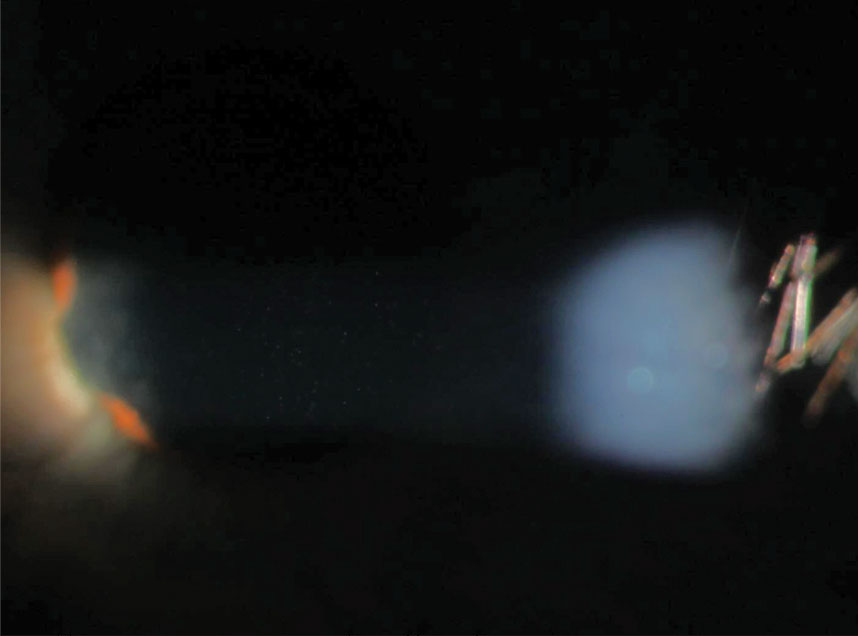 |
| Topical corticosteroids only were associated with increased cataract risk when anterior chamber cells were absent or minimally present. Photo: Aaron Bronner, OD. Click image to enlarge. |
Identifying the factors that would alter chances of developing cataracts secondary to steroid therapy for intraocular inflammation could be useful both to guide clinical management and to counsel patients regarding realistic visual outcomes. A recent study published in American Journal of Ophthalmology has determined that topical corticosteroids only were associated with increased cataract risk in patients with anterior uveitis when anterior chamber cells were absent or minimally present, suggesting that the drug’s use to treat active inflammation—which itself is cataractogenic—does not cause a net increase in cataract incidence.
This large retrospective cohort analysis studied cataract incidence—newly reduced visual acuity worse than 20/40 attributed to cataract; or incident cataract surgery—in 3,923 eyes of 2,567 patients with anterior uveitis over a five-year period.
The team found that visually significant cataract development was a common complication of anterior uveitis, which occurred in approximately 25% of all eyes over a five-year period in this large retrospective cohort analysis. Cataract complicates anterior uveitis in about 5.4/100 eye-years. Adjusted hazard ratio (HR) for risks associated with cataract included:
- older age (over 65 vs. <18 years), HR=5.04
- higher anterior chamber cell grade, HR=2.60
- prior incisional glaucoma surgery, HR=1.86
- band keratopathy, HR=2.23
- posterior synechiae, HR=3.71
- elevated IOP (≥30 vs. 6-20mm Hg) HR=2.57
The type of anterior uveitis was also a factor. Primary acute (HR=0.59) and recurrent acute (HR=0.74) had lower cataract risk than chronic anterior uveitis.
Use of higher-dose prednisolone acetate 1%-equivalent (≥two drops/day) was associated with greater than twofold higher cataract risk in eyes with anterior chamber cell grades ≤0.5+ but was not associated with higher cataract risk in the presence of ≥grade 1+ anterior chamber cells. After adjusting for other factors, the increase in risk was less pronounced (and not significantly increased for one drop daily of prednisolone acetate 1% per day or less).
“Risk at higher doses leveled off at two drops daily or higher, perhaps because the corticosteroid-induced gene expression that affects cataract risk was fully mobilized,” the researchers wrote in their paper.
“The results of this analysis can be interpreted as showing that any dose of topical corticosteroids can be used without increasing cataract risk over and above that resulting from anterior chamber inflammation itself at levels of grade 1+ or higher—perhaps because the negative effects of corticosteroids on the lens are balanced by the beneficial effects on reducing inflammation,” they concluded. “This result suggests that for induction of quiescence of anterior chamber inflammation, topical corticosteroids of any dose level do not increase the risk of cataract and may be freely used to suppress active inflammation as quickly as possible.”
Papaliodis GN, Rosner BA, Dreger KA, et al. Incidence of and risk factors for cataract in anterior uveitis. Am J Ophthalmol. July 4, 2023. [Epub ahead of print]. |

